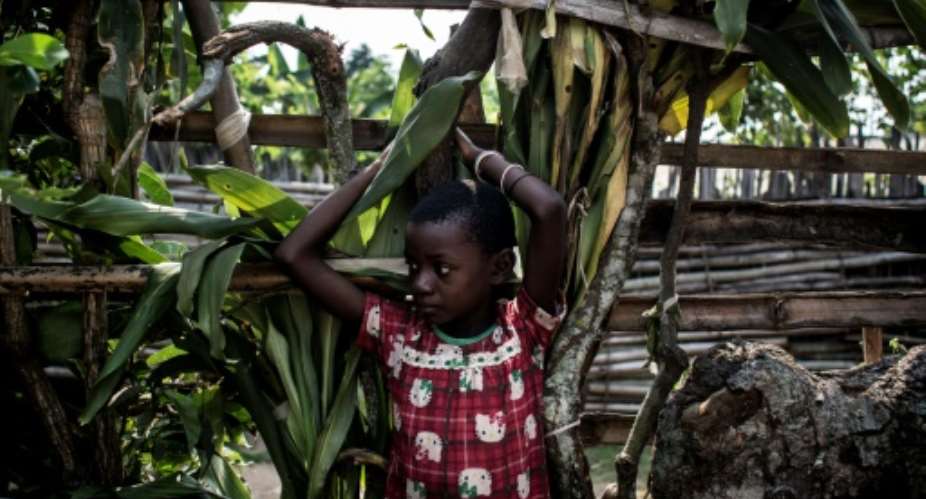Kinshasa (AFP) - The UN accused DR Congo on Tuesday of backing a militia that has mutilated toddlers and hacked pregnant women in the troubled Kasai region as the Catholic Church put the death toll there at more than 3,300.
"I am appalled by the creation and arming of a militia, the Bana Mura, allegedly to support the authorities in fighting the Kamwina Nsapu (rebels)," Zeid Ra'ad Al Hussein told the UN Human Rights Council in Geneva.
The new group "has carried out horrific attacks against civilians from the Luba and Lulua ethnic groups," Zeid said.
"My team saw children as young as two whose limbs had been chopped off. Many babies had machete wounds and severe burns ... At least two pregnant women were sliced open and their foetuses mutilated."
A UN official told AFP that it was unclear which authorities were behind the new militia group.
Some 1.3 million people are estimated by the United Nations to have fled their homes in eight months of spiralling unrest in Democratic Republic of Congo's central Kasai.
The violence began in September when security forces moved in against followers of Kamwina Nsapu -- who had been killed a month earlier -- rebelling against the increasing authority of the central government.
Earlier Tuesday, the papal envoy to DR Congo said in a report that 3,383 people have been killed since October in Kasai, a far higher toll than the UN's previous figure of 400 dead.
The church report dated June 19 said 20 villages had been "completely destroyed", 10 of them by the DRC armed forces (FARDC), four by the tribal militias and six by unidentified forces.
It mentioned 30 mass graves, while the UN mission has spoken of 42.
Kamwina Nsapu, a tribal chieftain in territory near the southern border with Angola, had openly challenged the authority of President Joseph Kabila's government, provoking a crackdown by security forces.
UN wants independent probe
 Interviews conducted by UN rights experts found evidence of mutilation using machetes
Interviews conducted by UN rights experts found evidence of mutilation using machetes
Last February, the UN's Congo mission MONUSCO accused the Kamwina Nsapu militia of "atrocities ... including the recruiting and use of child soldiers," but also condemned "a disproportionate use of force" by the FARDC.
Two Western experts sent to investigate the conflict by UN Secretary-General Antonio Guterres went missing in March. Their bodies were found in a shallow grave by peacekeepers a fortnight later, one of them decapitated.
The government blamed the tribal militia for their murders.
On Tuesday, Zeid called for an "independent, international investigation" to be set up to look into the situation in the region.
But government spokesman Lambert Mende said DR Congo "is not disposed to agree to the idea of deploying an international committee of inquiry on its territory" that would function independently of Congolese bodies.
Human Rights Minister Marie-Ange Mushobekwa-Likulia instead told the UN council in Geneva that the Kinshasa government would allow UN investigators to help a national probe into the abuses.
She insisted Kamwina Nsapu rebels were behind the "true human slaughter" in the Kasai and said that 1,333 civilians and 289 police had been killed in the unrest.
The UN quoted witnesses as saying local authorities, and in some cases "state agents" and members of local units of the national army and police forces, had armed and organised the Bana Mura militia.
In one case, a "well-known" local leader reportedly provided machetes, hunting rifles and fuel to Bana Mura militia members for their attack on the village of Cinq on April 24, in which dozens of men, women and children were reportedly shot, hacked or burned to death, Zeid said.
"Hundreds of assailants also allegedly attacked the main health centre in the village and killed some 90 patients, medical personnel and others," he said, adding that more than 20 other villages had faced similar attacks.





 NDC demands complete overhaul of security protocols at EC to safeguard electoral...
NDC demands complete overhaul of security protocols at EC to safeguard electoral...
 Ghana reaches interim deal with international bondholders — Finance Ministry
Ghana reaches interim deal with international bondholders — Finance Ministry
 Mahama to form joint army-police anti-robbery squads to safeguard 24-hour econom...
Mahama to form joint army-police anti-robbery squads to safeguard 24-hour econom...
 Another man jailed eight months over shrinking penis
Another man jailed eight months over shrinking penis
 Ghana to adjust external bond deal to meet IMF debt sustainability goals — Finan...
Ghana to adjust external bond deal to meet IMF debt sustainability goals — Finan...
 IMF negotiations: We've not failed to reach an agreement with bondholders; we’ve...
IMF negotiations: We've not failed to reach an agreement with bondholders; we’ve...
 EC begins recruitment of temporary electoral officials, closes on April 29
EC begins recruitment of temporary electoral officials, closes on April 29
 NPP lost the 2024 elections in 2022 due to inflation and cedi depreciation — Mar...
NPP lost the 2024 elections in 2022 due to inflation and cedi depreciation — Mar...
 Your good heart towards Ghana has changed; don’t behave like Saul - Owusu Bempah...
Your good heart towards Ghana has changed; don’t behave like Saul - Owusu Bempah...
 Wa West: NDC organizes symposium for Vieri Ward Women
Wa West: NDC organizes symposium for Vieri Ward Women
